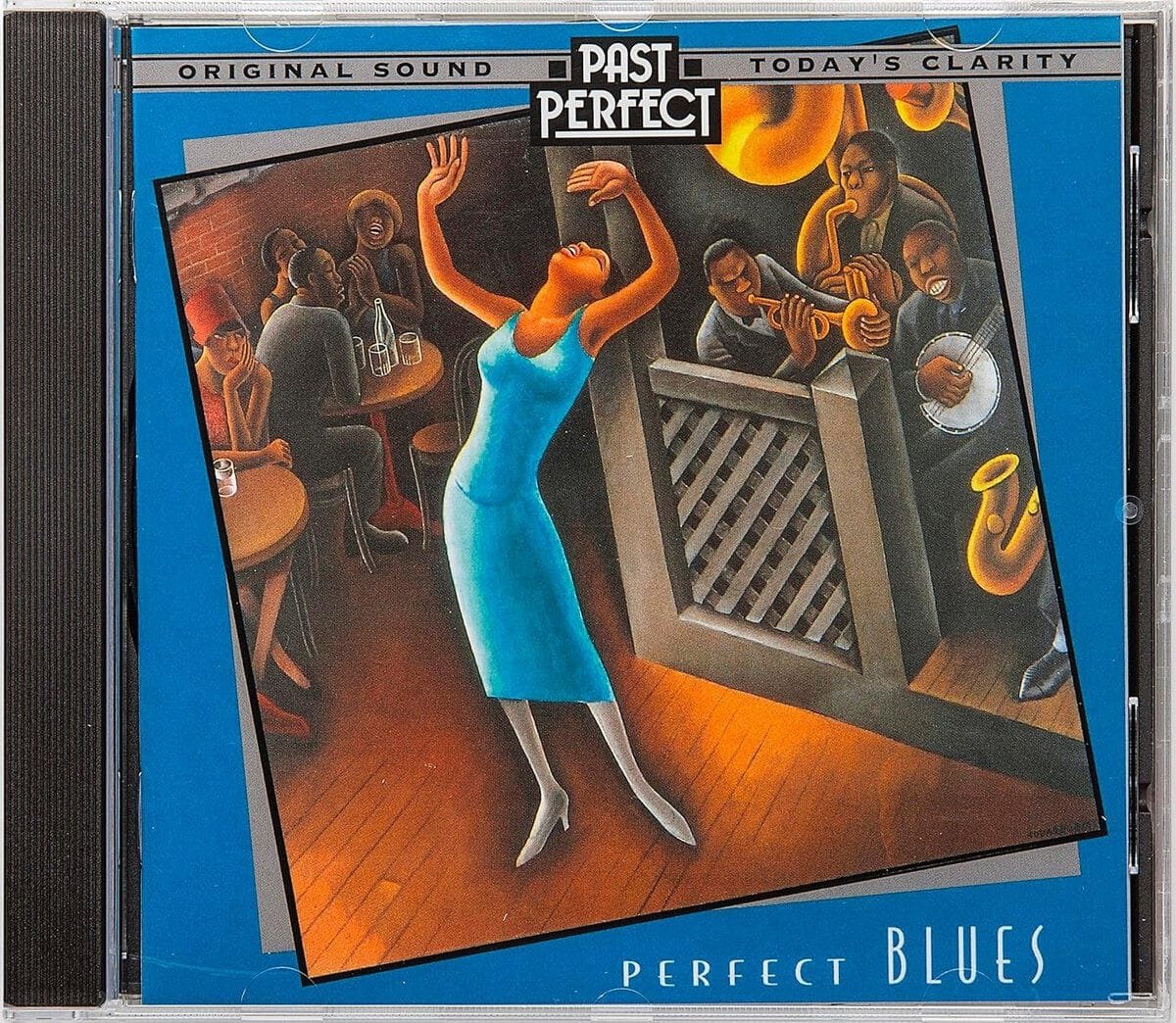Playing behind the beat is like giving your music a cozy hug, letting it breathe and wiggle with that smooth, laid-back vibe we adore in jazz and blues. It's not just about sounding cool—though trust me, it definitely does—it's about adding character to your tunes. Think of legends like Miles Davis; they mastered this technique, transforming simple melodies into emotional journeys. To practice, try using a metronome but set it a smidge ahead, or jam with some drummer friends, if you're brave! So, if you want to jazz up your groove and connect deeper with your audience, stick around for more tips!
Key Takeaways
- Playing behind the beat creates a relaxed, laid-back feel, enhancing emotional expression in jazz music.
- This technique allows for rhythmic flexibility, enabling creative interaction with other instruments.
- Influential artists like Miles Davis and D'Angelo exemplify mastery of behind-the-beat playing, showcasing emotional depth.
- Practicing with a metronome set slightly ahead can help develop timing skills for a more relaxed groove.
- Engaging the audience through storytelling and emotional resonance enhances the overall experience of behind-the-beat performances.
Understanding Behind-the-Beat Concept
Playing behind the beat is an essential concept that can transform your musical expression. It's like showing up fashionably late to a party, but instead of awkward small talk, you're creating a vibe that's relaxed and cool. When you intentionally place your notes slightly later than the expected downbeat, you're not just slacking off; you're giving your music a laid-back feel that's especially loved in jazz, blues, and R&B. Seriously, it's like giving your groove a warm hug.
Now, let's talk about rhythmic flexibility. It's vital for understanding how you can play with note placement. Think of the bass drum as your punctual friend who always arrives on time, while the other instruments take their sweet time.
This interaction creates a rich tapestry of sound, letting you explore your creative side. Just look at legends like Miles Davis or John Bonham—they mastered this technique, adding depth and emotion to their performances.
Techniques for Practicing Rhythm
Mastering the art of playing behind the beat requires deliberate practice techniques that sharpen your rhythmic skills. Don't worry; it's not as intimidating as it sounds! Here are a few techniques to help you get started on your rhythmic journey:
| Technique | Description | Purpose |
|---|---|---|
| Metronome Magic | Set your metronome slightly ahead of the tempo. | Helps you consciously pull back the beat. |
| Record and Reflect | Record your performance and analyze the timing. | Identify areas to improve your groove. |
| Subdivision Counting | Count beats using eighth or sixteenth notes. | Aids in understanding rhythmic placement. |
Incorporate these timing exercises into your daily routine, and you'll soon find yourself grooving along like a pro—or at least like someone who can hold a beat without tripping over their own shoelaces. Jamming with skilled drummers can also boost your rhythmic improvisation skills, allowing you to feel the music in real-time. Plus, listening to songs with that laid-back feel can inspire you to adopt those characteristics in your own playing style. So go ahead, embrace the beat!
Influential Artists and Genres
In the world of music, certain artists and genres stand out for their unique ability to play behind the beat, creating a signature sound that captivates listeners. I mean, just think about legends like Miles Davis and Chick Corea—when they play, it feels like they're giving time a gentle nudge. Their jazz improvisation techniques weave in and out of rhythms, adding layers of emotional depth that can make you tear up or dance like nobody's watching.
Then there's funk, where artists like James Brown lay down some seriously groovy funk rhythm patterns that make it impossible to stay still. It's like those beats wrap around you, and suddenly you're doing the robot, even if you have two left feet!
And let's not forget R&B and blues; D'Angelo and Pino Palladino use that behind-the-beat magic to create a chill vibe that feels just right.
Even country music, often a blend of blues and R&B, has that laid-back groove that keeps you tapping your foot. You see, playing behind the beat isn't just a technique—it's a journey through sound that many of us are lucky enough to experience!
Challenges in Playing Style
Shifting to a laid-back playing style presents several challenges for musicians. You might find yourself wrestling with timing challenges, feeling like you're stuck in a game of musical tug-of-war. Relaxing into that groove isn't as easy as it sounds.
- You'll need to practice consciously to avoid rushing, especially when jamming with high-caliber musicians.
- Fear of losing tempo can creep in, making you tense up like a cat on a hot tin roof.
- Overcoming ingrained habits from your past playing experiences can feel like trying to teach an old dog new tricks.
Self-awareness is key here. You've gotta recognize your rhythm tendencies, or you'll end up playing like a caffeinated squirrel.
Engaging in regular jam sessions can help; they're great for real-time groove adjustment. You can try to internalize the feel of music before you perform it, but sometimes you might just end up playing like you're trying to outrun a bear.
Community and Learning Resources
So, you've mastered the art of playing behind the beat, but you're feeling a bit lonely, huh?
Well, hopping onto online learning platforms can connect you with fellow musicians who share your passion—trust me, it's way more fun than practicing alone in your room, wearing pajamas and eating snacks (though, I won't judge!).
Plus, why not jump into some collaborative jam sessions? You might just find that experimenting with timing and rhythm is a lot less intimidating when you've got a group cheering you on.
Online Learning Platforms
Numerous online learning platforms provide valuable resources for mastering the behind-the-beat technique, making it easier than ever for musicians to enhance their skills. You don't have to wander the streets like a jazz vagabond anymore; you can learn right from your couch!
Here are some great options to check out:
- SBL Academy offers personalized lessons with training videos and a 14-day free trial for you to explore.
- TalkBass.com has community forums where you can swap tips and tricks with fellow musicians—think of it as a virtual coffee shop for jazz lovers!
- Patreon features educators like Harry Likas, who delve into solo piano arrangements and jazz harmony methods that'll make your behind-the-beat playing shine.
You'll also find plenty of instructional videos and tutorials designed to help you refine your timing and rhythmic placement.
And don't forget about those virtual workshops—engaging in online jam sessions helps you apply your new skills in real-time, which is perfect for when you realize your rhythm's been a bit… shall we say, enthusiastic?
Collaborative Jam Sessions
Online learning platforms are fantastic for honing your skills, but nothing beats the real-world experience of collaborative jam sessions. Imagine this: you walk into a room, your heart's racing, and you see fellow musicians ready to engage in the jam session dynamics. It's like a musical potluck, where everyone brings their unique flavor, and you've just got to hope yours doesn't burn!
During these sessions, you get to practice playing behind the beat in real-time, which is way harder than it sounds. Trust me, I've played a note or two too early, and it's not pretty!
But the beauty of musical collaboration is that you'll receive immediate feedback from your fellow jammers. They'll help you tweak your timing, so you can groove like a pro.
Plus, you'll explore various genres, making you appreciate the nuances of this technique across different styles.
Emotional Connection in Music
You know, when you really get into the emotional side of music, it's like you're wearing your heart on your sleeve, and trust me, I've done that—once, I cried during a karaoke version of "I Will Always Love You."
Different genres can hit us in unique ways, like how blues makes you feel chill while you're secretly wishing you could play as cool as D'Angelo.
Expressing Musical Emotion
In music, the emotional connection between the performer and the audience often unfolds in the subtle nuances of rhythm and timing. You know, it's kind of like trying to tell a story while your dog decides to chase its tail—everything's a bit unpredictable, but that's where the magic happens.
When you play behind the beat, you're not just keeping time; you're exploring the emotional dynamics, crafting a narrative that resonates deeply.
Here are a few ways this technique can enhance your musical storytelling:
- Evokes nostalgia: Think about that song that takes you back to a summer night, right?
- Creates tension: Sometimes, a little pause before the punchline makes it all the more hilarious.
- Encourages relaxation: Like that feeling when you finally sit down after a long day.
Great artists like Miles Davis and D'Angelo show us how this laid-back rhythm can pull listeners in, making them feel every note.
Genre-Specific Emotional Resonance
Different genres of music each carry their own emotional weight, shaping how listeners connect with the sounds they hear.
Think about it—you've probably felt the blues' sorrowful vibes tugging at your heartstrings or found yourself grooving to funk's infectious joy. Isn't it wild how these genre emotions can hit you right in the feels?
In jazz, playing behind the beat creates a relaxed pocket, allowing musicians to express all those subtle emotional nuances. You might find yourself swaying, feeling that intimate connection with the music.
And then there's country, blending blues and R&B to tell relatable stories of love, loss, and nostalgia—perfect for when you're feeling a bit weepy after binge-watching a sad show.
Music psychology tells us that engaging deeply with these emotions helps musicians connect with their audience, making you feel like they're singing just for you.
Audience Engagement Strategies
Emotional connection is at the heart of effective audience engagement in music. When you dive deep into the emotional content of a piece, it's like opening a treasure chest of feelings that can resonate with your listeners. Trust me, nothing makes you feel more like a rock star than seeing someone sway or wipe a tear during your performance!
To really connect, consider these strategies:
- Share your story: Relate personal experiences that inspired the music.
- Invite audience participation: Encourage clapping, singing, or even dancing along!
- Observe audience feedback: Adjust your performance to the energy in the room.
Using techniques like the behind-the-beat groove can create a chill performance atmosphere that captivates listeners. Think of legendary artists like D'Angelo, who hook you in with that laid-back vibe.
Plus, rhythm variations can stir up emotions, making your music unforgettable.
Conclusion
So, as you immerse yourself in playing behind the beat, remember, it's like dancing with a partner who has two left feet—they might stumble, but together, you create something beautiful. Embrace those off-kilter moments and let them spark your creativity. Sure, you might find yourself tripping over your own rhythm now and then, but hey, that's part of the fun, right? Keep exploring, keep laughing, and let your unique groove shine through in every note!



